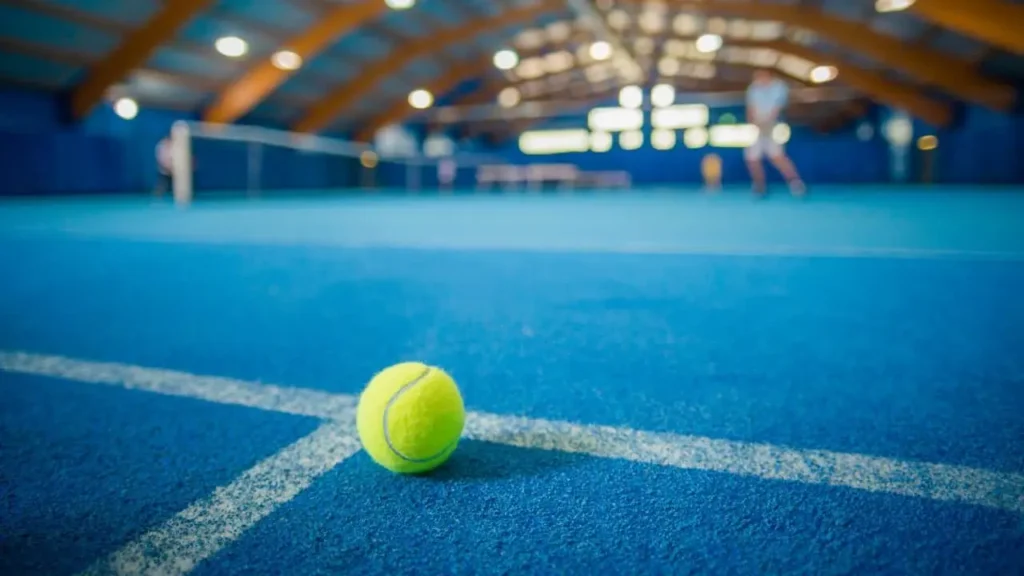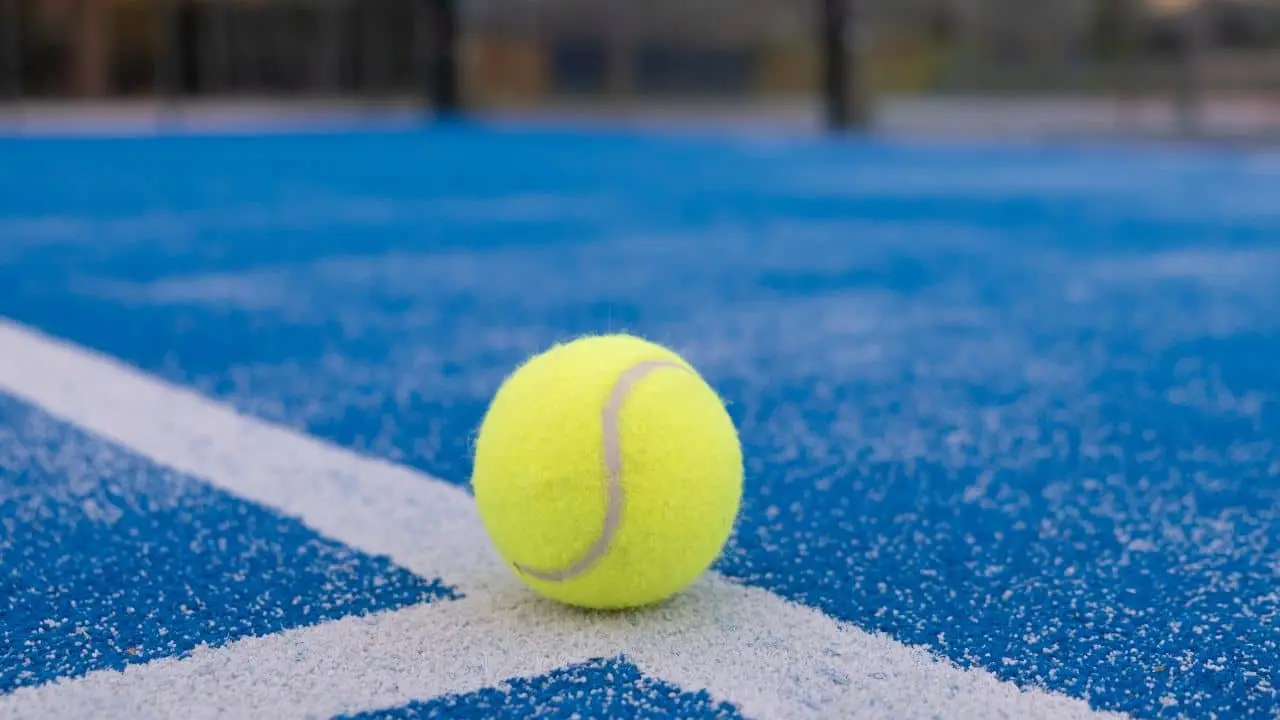When it comes to tennis, the type of ball you use may affect your tennis game. Tennis balls have two groups: pressured and pressureless. Each ball has its specific features, advantages, and disadvantages.
Which tennis ball is recommended for all players? As a professional tennis player, I suggest Dunlop and Wilson US Open tennis balls. Let’s dive into the differences between these two types of tennis balls. That will help you to decide which is best for your needs. Read all the information on Pressureless vs Pressurized Tennis Balls here.
Table of Contents
ToggleWhat Are Pressureless Tennis Balls?
Pressureless tennis balls are those balls that do not have internal air pressure. They have a solid rubber core rather than having pressurized gas. The solid rubber core keeps its bounce even as the felt wears down. They feel dead at the start. With time, the felt fabric cover wears out, and it softens inside. They are best for beginners and recreational players.
The main benefit is that they can hold their bounce over a long period. These are suitable for ball machines due to consistent bounce and durability. These are less used in tournaments and competitive matches. Athletic works pressureless tennis balls perfectly.
Features of Pressureless Tennis Balls
- Pressureless balls are very durable. Their solid design keeps them bouncy, not air.
- These are also preferred for ball machines. Compared to regular tennis balls, they last a lot longer.
- Pressureless tennis balls are made of solid rubber core. This solid core provides permanent bounce.
- Pressureless balls feel slightly heavier and firmer. So, they are somewhat challenging to handle and play. Players feel difficulty controlling these balls.
- They are great for matches and all types of training.
- Pressureless tennis balls are more expensive than other tennis balls. The average price of pressureless tennis balls is $15 to $30 for a 12-ball pack. Some larger buckets (48-72 balls) cost between $60 and $90.
- The average lifespan of non-pressurized tennis balls is up to six months. When unopened, they can last more than six months.
Types of Pressureless Tennis Balls
There are a few types of these balls. All these types have different features for different training needs.
Standard Pressureless Balls: These are the most common types of pressureless balls. These are best for regular training and long practice sessions. Tourna Pressureless and Gamma Bucket-O-Balls are the best in this category.
Microcell/High-Performance Balls: These balls contain advanced microcell technology. For example, Tretorn Micro X balls.
Training Balls for Kids/Beginners: Slower and softer, ideal for skill development. Best for junior players, beginners, and recreational play. Gamma Quick Kids are the best pressureless tennis balls.
Bulk Pressureless Balls: They are sold in large quantities. They are convenient and cost-effective for extensive practice sessions.
Advantages of Pressureless Tennis Balls
- Pressureless balls maintain their bounce over time.
- Ideal for extended practice and ball machines.
- These balls provide a consistent bounce throughout their lifespan.
- More expensive initially.
- Their longevity makes them a good investment for practice and training sessions.
- Usable with ball machines.
- Have a thicker and more durable felt.
- Handle the wear and tear of repetitive play, particularly on hard courts.
Disadvantages of Pressureless Tennis Balls
- Pressureless balls are often heavier and feel firmer off the racket. ,
- Less Natural Bounce.
- Feel less responsive.
- Limited Use for Competition.
What Are Pressurized Tennis Balls?

Pressurized balls are balls that are filled with pressurized air(nitrogen). They’re sealed within this rubber core to hold the gas. This internal air or gas gives them a light, lively bounce and responsiveness. This pressure is sealed within the rubber core during manufacturing. The volume of compressed air is around 14 psi. This volume is the reason for its bounce and lively feel.
Pressureless balls are suitable for tournament play. Their performance declines over time, and air starts to leak out. They contain superior spin potential and a standardized feel. When exposed to atmospheric pressure, tennis balls have pressureless losses, which is a big drawback.
Features of Pressurized Tennis Balls
- Pressurized balls feel bouncy at the start but lose bounce after some time. They wear out faster than pressureless balls.
- Pressurized balls are made with a hollow rubber core filled with compressed air. This air pressure inside the core gives an initial high and lively bounce.
- The outer layer is a high-quality felt that provides grip and helps with spin. This felt covering is often softer than that of pressureless balls.
- The playability of these balls is brilliant. They provide good strength for different strokes. These are ideal for generating spin and controlling shots.
- The price of pressurized tennis balls ranges from $3 to $6 per can of three balls. Larger packs, such as cases of 24 cans (72 balls), range from $60 to $90.
- Pressurized tennis balls have an average lifespan of three to four weeks. Unopened or sealed balls can last almost two years.
Types of Pressurized Tennis Balls:
Pressurized tennis balls come in several types. Each type is designed for specific playing surfaces, skill levels, and preferences.
Regular Duty: These are often made with a softer felt to play on clay and indoor courts. Wilson US Open Regular Duty and Dunlop ATP Regular Duty are their examples.
Extra Duty: They have thicker, more durable felt to withstand the roughness of hard courts. Penn Championship and Wilson US Open are the best extra-duty balls.
High Altitude: These are specially designed for play at elevations above 4,000 feet. Their lower internal pressure provides a more controlled bounce at higher elevations. Penn Championship and Wilson High Altitude are common altitude balls.
Practice or Coach Balls: These balls are best for training and drills rather than match play. These are best for coaches, practice sessions, and training drills. Wilson Practice Balls and Penn Coach Practice Balls are common examples of them.
Professional or Premium Balls: These are high-quality balls for tournament and competition play. Wilson US Open and Dunlop are the best premium balls.
Advantages of Pressurized Tennis Balls
- Pressurized balls offer a high, lively bounce that feels natural and responsive.
- Ideal for match play and competitive settings.
- The air-filled core and thinner felt give the racket a softer, lighter feel.
- The responsive feel and lighter design make it easier to generate spin.
- Allow for more varied shots and control.
- Preferred choice for competitive matches and official tournaments.
Disadvantages of Pressurized Tennis Balls
- These balls lose air over time, causing a reduction in bounce
- Pressurized balls can be more expensive over time.
- The thinner felt cover wears down faster.
How To Choose The Best Tennis Ball For Your Need
Choosing between pressureless and pressurized tennis balls depends on your playing style and playing environment. You can decide from here which type best suits your needs and environment:
For Practice and Training:
Pressureless balls are ideal for large practice sessions. They’re durable, maintain their bounce over time, and can withstand heavy usage. They’re also perfect for training with ball machines or long practice sessions. Their long-lasting construction gives them consistent bounce, making them ideal for training.
For Competitive Play:
Pressurized Balls are best for competitive play due to their high, lively bounce. They give a responsive feel. Lighter and excellent control make them a popular choice for tournaments and leagues. These balls allow quick shots and spins. They give players an advantage in faster-paced and official matches.
For Recreational Play:
Pressurized Balls feel lighter and more responsive. So they’re also a great choice for casual, recreational players looking for fun. Recreational players who enjoy the feel of fresh use bouncy pressurized balls. You can also use pressureless balls but pressurized is the best choice.
Conclusion
Both pressured and pressureless tennis balls have their benefits. Pressurized tennis balls offer the responsiveness and bounce that best suit a tournament. If you’re practicing for competitive play, it is outstanding for it. Pressureless balls are more affordable, and athletic works pressureless tennis balls. Completely understand how pressureless tennis balls work? In the end, many players discover that combining the two forms enables them to maximize their practice and play. They are getting specific requirements in various competitions.
FAQ's
You should read the information on pressurized vs non-pressurized tennis balls before use. Here are some Frequently Asked Questions to describe such a query.
Pressurized tennis balls last three to four weeks, while pressurized last up to 6 months. Their use and care may increase their life.
Pressurized balls are better for regular play due to their lighter feel and high bounce. These are ideal for competitive matches and recreational play.
Because they don’t lose bounce quickly. Their durability makes them ideal for significant use in ball machines. They maintain performance over time and wear out less.
Pressureless balls last longer because they don’t rely on air pressure. They maintain their bounce and shape longer, even with frequent use. Pressurized balls lose bounce as the internal air leaks.
You can, but they wear out quickly due to the high-frequency impact of ball machines. Pressureless balls are a better option for machines as they offer high durability.
Pressureless balls are often more cost-effective for practice. It is more effective due to its longevity.
Beginners can benefit from both pressureless and pressurized. Long practice periods are ideal for pressureless balls. Pressurized balls offer a lighter feel and bounce that helps in learning control and timing.

